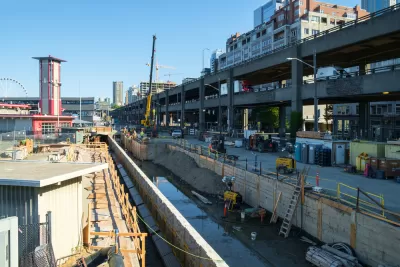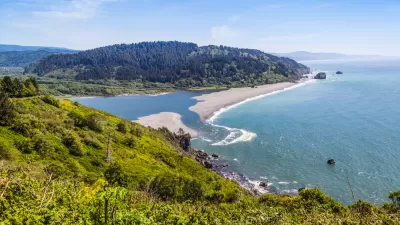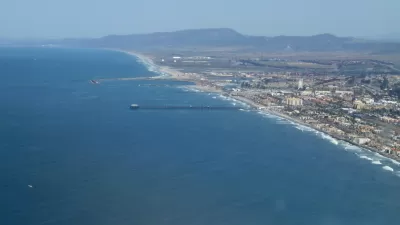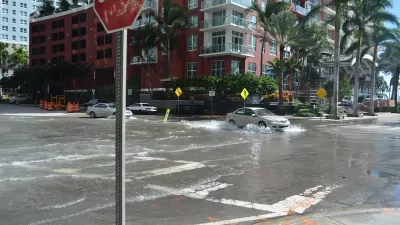Engineers and scientists in Seattle are testing a new generation of shoreline infrastructure that hopefully can do a better job of letting people and wild animals—in this case salmon—coexist.

Ken Christensen tells the story of Seattle's new $140 million seawall—an underappreciated but critical piece of infrastructure.
Christensen describes the seawall as an ongoing experiment in habitat restoration, in addition to the brute strength it provides to keep the rising tides at bay. Jeff Cordell, a fish biologist at the University of Washington, is quoted in the article saying the new Alaskan Way seawall is the first of its scale to try to improve habitat for fish.
For 80 years, the Alaskan Way seawall was like most: a smooth, vertical slab of concrete that held back the sea for the city’s bustling waterfront. It helped cement Seattle’s status as a commercial hub and deepwater port, but also sealed the fate of salmon habitat, locking away miles of gradually sloping beaches.
Now:
The new seawall should make life easier by featuring an underwater corridor for the fish to pass through on their way to the ocean. It’s illuminated by glass tiles in the pedestrian sidewalk above and filled with rocky surfaces where microalgae and small marine invertebrates are more likely to survive.
In the early days of the new seawall, the project shows promise, as filamentous microalgae has begun to show at low tide, which will make the new sea wall a more attractive environment for fish. If the experiment is successful, the new seawall could be a model for other coastal communities around the world, faced with the prospects of rising sea levels as a result of climate change.
FULL STORY: Can Seattle’s Seawall Defend The City And Protect Salmon, Too?

Alabama: Trump Terminates Settlements for Black Communities Harmed By Raw Sewage
Trump deemed the landmark civil rights agreement “illegal DEI and environmental justice policy.”

Planetizen Federal Action Tracker
A weekly monitor of how Trump’s orders and actions are impacting planners and planning in America.

The 120 Year Old Tiny Home Villages That Sheltered San Francisco’s Earthquake Refugees
More than a century ago, San Francisco mobilized to house thousands of residents displaced by the 1906 earthquake. Could their strategy offer a model for the present?

Ken Jennings Launches Transit Web Series
The Jeopardy champ wants you to ride public transit.

BLM To Rescind Public Lands Rule
The change will downgrade conservation, once again putting federal land at risk for mining and other extractive uses.

Indy Neighborhood Group Builds Temporary Multi-Use Path
Community members, aided in part by funding from the city, repurposed a vehicle lane to create a protected bike and pedestrian path for the summer season.
Urban Design for Planners 1: Software Tools
This six-course series explores essential urban design concepts using open source software and equips planners with the tools they need to participate fully in the urban design process.
Planning for Universal Design
Learn the tools for implementing Universal Design in planning regulations.
Clanton & Associates, Inc.
Jessamine County Fiscal Court
Institute for Housing and Urban Development Studies (IHS)
City of Grandview
Harvard GSD Executive Education
Toledo-Lucas County Plan Commissions
Salt Lake City
NYU Wagner Graduate School of Public Service





























